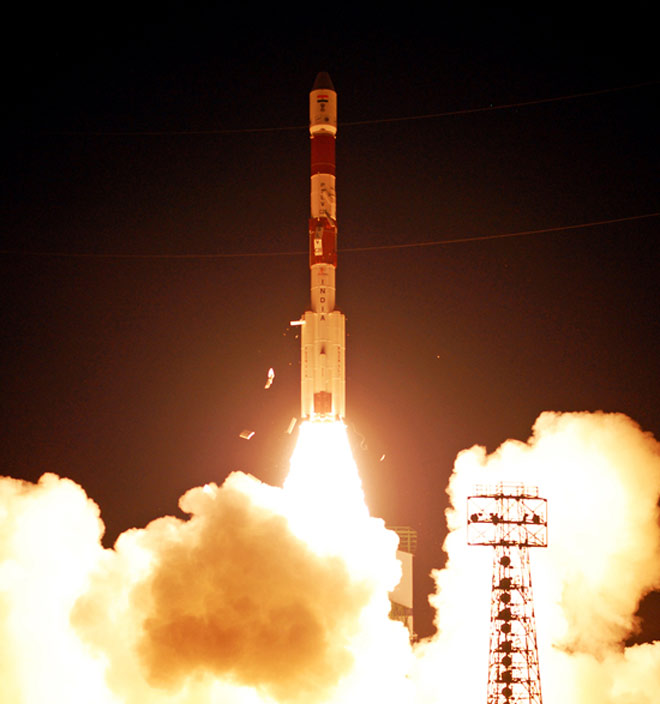
The PSLV-C26 rocket carrying navigation satellite IRNSS-1C lifts off from the Satish Dhawan Space Centre in Sriharikota early Thursday. Photo: ISRO.
SRIHARIKOTA, AP (PTI): Scripting another success in India's space programme, ISRO on Thursday launched its third navigation satellite IRNSS 1C on board its PSLV rocket from here in the wee hours, moving closer to setting up its own navigation system on par with the GPS of the US.
IRNSS 1C is part of the series of seven satellites Indian Space Research Organisation (ISRO) is planning to launch to put in place what is called the Indian Regional Navigation Satellite System. Today's launch marked the first time that India has conducted four orbital launches in a year.
Lifting off from the First Launch Pad of the spaceport exactly at 1.32 AM, the rocket painted a golden brush of flames in the night sky and 20 minutes later successfully placed the 1,425.4 kg weighing satellite in the intended orbit.
ISRO had aimed to launch the satellite into a sub-Geosynchronous Transfer Orbit with a 284 km perigee (nearest point to Earth) and 20,650 km apogee (farthest point to Earth) with an inclination of 17.86 degree with respect to the equatorial plane.
"PSLV C26 has precisely placed IRNSS 1C in its orbit," ISRO Chairman K Radhakrishnan said, describing the successful launch.
Being developed by India, IRNSS is designed to provide accurate position information service to users in the country as well as the region extending up to 1,500 km from its boundary, which is its primary service area.
The IRNSS system, which would ultimately have seven satellites and ground stations, was targeted to be completed by 2015 at a total cost of Rs 1420 crores, ISRO sources said.
Present in the Mission Control Room was Minister of State for Science and Technology Jitendra Singh, who congratulated the scientists on the successful launch.
"I thank you for making me witness this historic moment.
As India moves forward to become a world leader, I am sure in the 21 century, any leadership role should be based on scientific foundation and I am glad in the area of space we have emerged as world leaders," he said.
This was the seventh time ISRO was using an XL version of the PSLV rocket for its missions.
The mission life of the satellite is 10 years. The launch of PSLV 26 carrying IRNSS 1C was actually scheduled on October 10 but the countdown was postponed following some technical reasons.
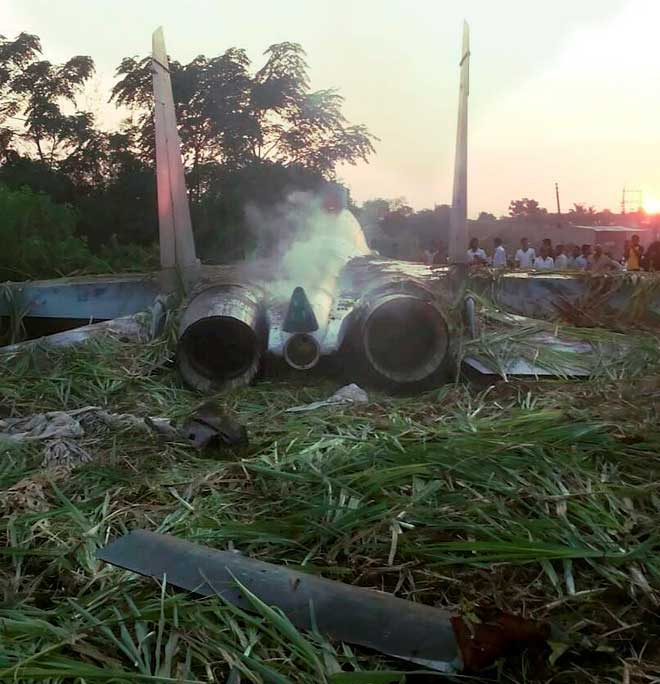 Previous Article
Previous Article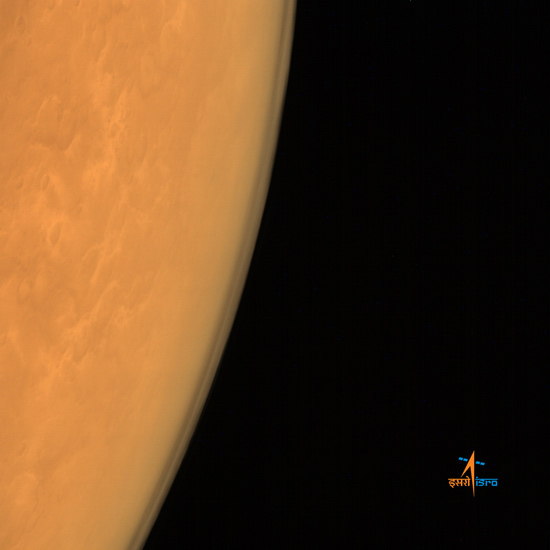 Next Article
Next Article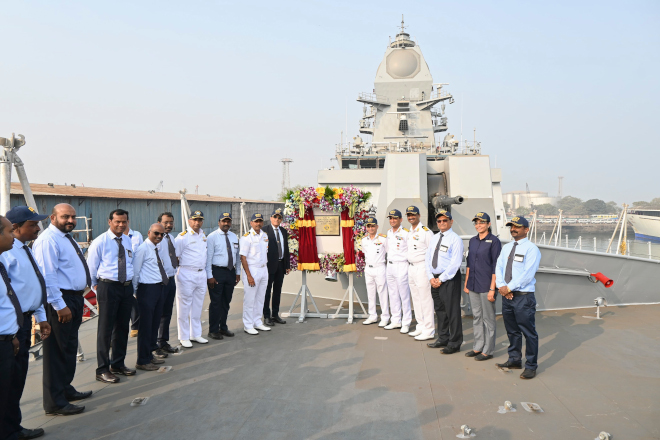
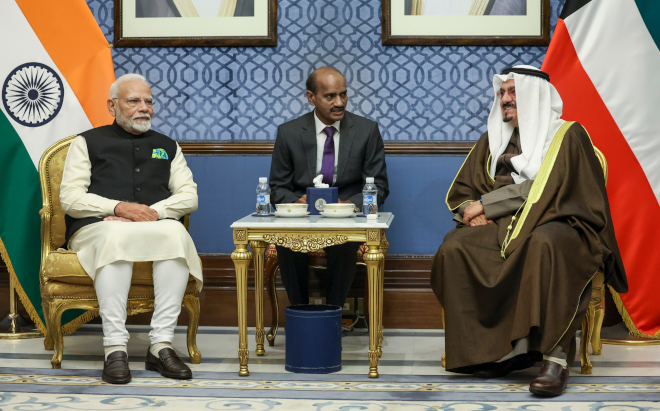












The Indian Air Force, in its flight trials evaluation report submitted before the Defence Ministry l..
view articleAn insight into the Medium Multi-Role Combat Aircraft competition...
view articleSky enthusiasts can now spot the International Space Station (ISS) commanded by Indian-American astr..
view article